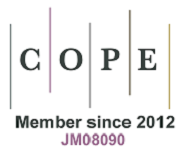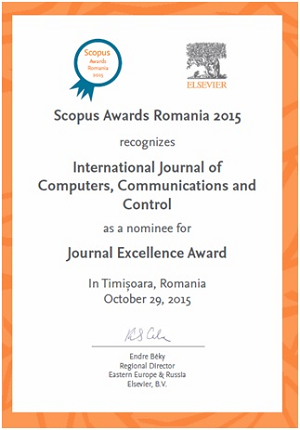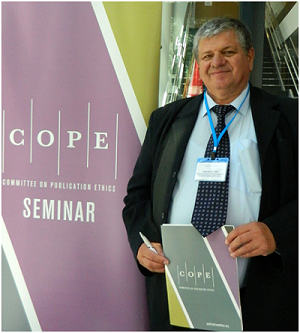Ensemble Sentiment Analysis Method based on R-CNN and C-RNN with Fusion Gate
Keywords:
Sentiment analysis, convolutional neural network, recurrent neural network, fusing gate.Abstract
Text sentiment analysis is one of the most important tasks in the field of public opinion monitoring, service evaluation and satisfaction analysis in the current network environment. At present, the sentiment analysis algorithms with good effects are all based on statistical learning methods. The performance of this method depends on the quality of feature extraction, while good feature engineering requires a high degree of expertise and is also time-consuming, laborious, and affords poor opportunities for mobility. Neural networks can reduce dependence on feature engineering. Recurrent neural networks can obtain context information but the order of words will lead to bias; the text analysis method based on convolutional neural network can obtain important features of text through pooling but it is difficult to obtain contextual information. Aiming at the above problems, this paper proposes a sentiment analysis method based on the combination of R-CNN and C-RNN based on a fusion gate. Firstly, RNN and CNN are combined in different ways to alleviate the shortcomings of the two, and the sub-analysis network R-CNN and C-RNN finally combine the two networks through the gating unit to form the final analysis model. We performed experiments on different data sets to verify the effectiveness of the method.References
Collobert, R.; Weston, J.; Bottou, L.; et al. (2011). Natural language processing (almost) from scratch, Journal of Machine Learning Research, 12, 2493-2537, 2011.
Cliche, M. (2017). BB_twtr at SemEval-2017 Task 4: Twitter Sentiment Analysis with CNNs and LSTMs, arXiv preprint arXiv, 1704.06125, 2017.
Du, C.; Huang, L. (2019). Sentiment Analysis Method Based On Piecewise Convolutional Neural Network and Generative Adversarial Network, International Journal of Computers Communications & Control, 14(1), 7-20, 2019. https://doi.org/10.15837/ijccc.2019.1.3374
Kalchbrenner, N.; Blunsom, P. (2013). Recurrent convolutional neural networks for discourse compositionality, arXiv preprint arXiv, 1306.3584, 2013.
Kalchbrenner, N.; Grefenstette, E.; Blunsom, P. (2014). A convolutional neural network for modelling sentences, arXiv preprint arXiv, 1404.2188, 2014.
Kim, Y. (2014). Convolutional neural networks for sentence classification, arXiv preprint arXiv, 1408.5882, 2014.
Lai, S.; Xu, L.; Liu, K.; et al. (2015). Recurrent Convolutional Neural Networks for Text Classification, AAAI, 333, 2267-2273, 2015.
Luong, T.; Socher, R.; Manning, C. (2013). Better word representations with recursive neural networks for morphology, Proceedings of the Seventeenth Conference on Computational Natural Language Learning, 104-113, 2013.
Socher, R.(2014). Recursive deep learning for natural language processing and computer vision, Stanford University, 2014.
Socher, R.; Chen, D.; Manning, C.D.; et al.(2013). Reasoning with neural tensor networks for knowledge base completion, Advances in neural information processing systems, 926-934, 2013.
Socher, R.; Huval, B.; Manning, C.D.; et al. (2012). Semantic compositionality through recursive matrix-vector spaces, Proceedings of the 2012 joint conference on empirical methods in natural language processing and computational natural language learning. Association for Computational Linguistics, 1201-1211, 2012.
Socher, R.; Perelygin, A.; Wu, J.; et al. (2013). Recursive deep models for semantic compositionality over a sentiment treebank, Proceedings of the 2013 conference on empirical methods in natural language processing, 1631-1642, 2013.
Shi, B.; Bai, X.; Yao, C. (2017). An end-to-end trainable neural network for image-based sequence recognition and its application to scene text recognition, IEEE transactions on pattern analysis and machine intelligence, 39(11), 2298-2304, 2017. https://doi.org/10.1109/TPAMI.2016.2646371
Published
Issue
Section
License
ONLINE OPEN ACCES: Acces to full text of each article and each issue are allowed for free in respect of Attribution-NonCommercial 4.0 International (CC BY-NC 4.0.
You are free to:
-Share: copy and redistribute the material in any medium or format;
-Adapt: remix, transform, and build upon the material.
The licensor cannot revoke these freedoms as long as you follow the license terms.
DISCLAIMER: The author(s) of each article appearing in International Journal of Computers Communications & Control is/are solely responsible for the content thereof; the publication of an article shall not constitute or be deemed to constitute any representation by the Editors or Agora University Press that the data presented therein are original, correct or sufficient to support the conclusions reached or that the experiment design or methodology is adequate.







